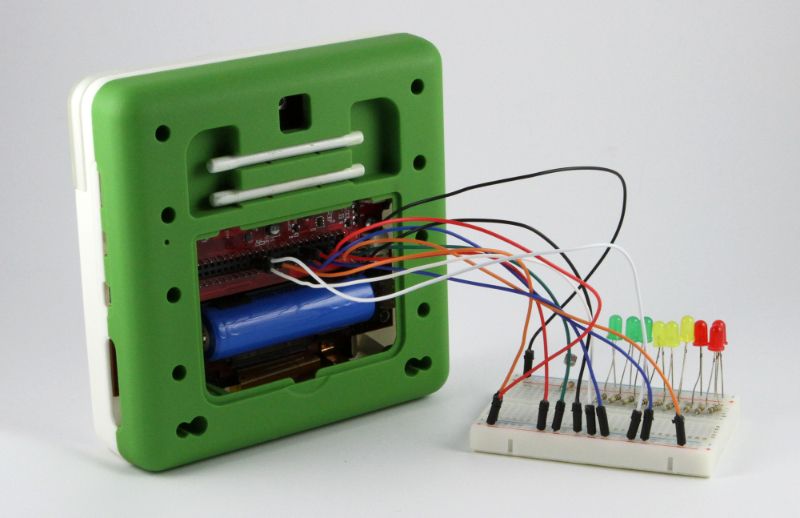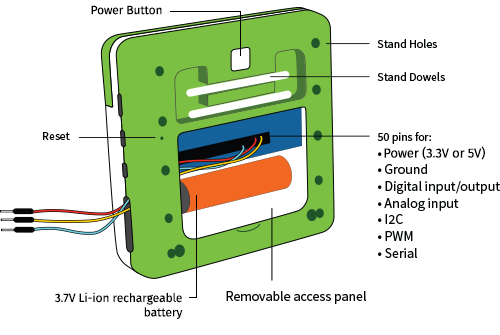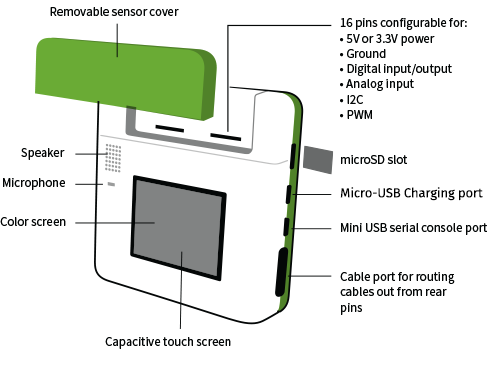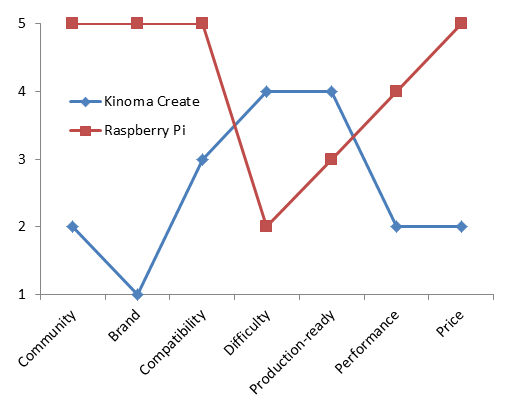Kinoma Create HW kit vs Raspberry Pi
Kinoma Create's review: a platform based on Java making it easier for anyone to start designing connected things. Good potential but lack of a strong community Arduino/RaspberryPi-style.

Last week Andy Carle presented Kinoma’s Create JavaScript-powered hardware construction kit at the IoT Silicon Valley Meetup. Here is a summary of what has been presented and some thoughts.
Kinoma Create’s mission is to make the development of connected objects easy for software developers used to work with high-level languages such as JavaScript, Python and so on. The idea is that you shouldn’t need to be a wizard of low-level native C or a Linux power-user to play with embedded electronics. Many times makers start implementing their idea using a scripting language on a demoboard (like a Raspberry Pi) but later, when times come to make the project real, they often realize they need to move on a smaller MCU to reduce costs and, unfortunately, re-write their code in another language and learn how to use new tools. This can be frustrating, time consuming and might even result in abandoning the project altogether.
Kinoma Create is a platform comprised of software development tools as well as a companion hardware prototype board. Makers can implement their idea entirely using JavaScript. The dev tools allow to implement a sort of Agile development process where the idea is first simulated completely in software, then emulated on hardware, finally implemented on a Kinoma kit and lastly built on custom hardware based on Kinoma Create’s reference schematic.


The evaluation kit is focused on usability more than performance: the hardware is loaded with color touch screen, microphone, speaker, Wi-Fi, Bluetooth, bunch of programmable I/O pins and a nice looking case (see pictures). Compared with the Pi, the Kinoma Create has much less raw computational power with its single-core 800MHz Marvell ARM SoC, only 128MB of RAM and a small 16MB of Flash memory (as a comparison the latest Pi sports a 900MHz Quad-Core ARM CPU, 1GB of RAM and allow for external SD card for permanent storage) but this is exactly what the Kinoma Create wants to be: a powerful enough demo-board with lots of embedded sensors, able to run a low-footprint embedded Linux with a custom-version stripped-down JavaScript engine. The idea is to have makers prototype their idea on something more likely to represent a realistic reference schematic for a final product. The BOM cost of the hardware (excluding case and screen) should be south of $10 for orders in the thousands, no exact figures have been provided.
This seems an awful lot similar to Raspberry Pi… how do the two compare with each other? I asked myself the same question… as a user, I can think of seven things I care about in a board like this (in order of importance): existence of a strong community, the brand (meaning: have I ever heard of it? How many other people use it? Is this going to be around in the foreseeable future?), compatibility with external hardware, difficulty of usage (e.g. required Linux skills), complexity to convert to production hardware, performance and price. Here how I think Kinoma Create and Raspberry Pi compare (this is all qualitative and based on my opinion):

As you can see the Kinoma Create does a good job at trying to be better than the Pi where the Pi does not shine, I have to admit that using the Raspberry Pi is not easy for someone not used to Linux command line. It is also true that if a maker has developed a concept on the Pi, and later needs to implement the idea using a smaller MCU, he could be in serious trouble because he suddenly loses all the advantages of running on Linux and have so many convenient software and libraries available. Having a platform that allows to never have to switch programming language can be a relief.
That said, I believe the community is still the most important element making a product like Raspberry Pi fly: you can literally find source code in any language for anything you might want to do, and people in forums are often willing to help. Also, it might be true that using the command line isn’t the simplest thing, but we have to acknowledge that the Linux command line wasn’t invented yesterday and that a quick Google search can solve most of the problems. The Kinoma Create is also not very known, at least if compared with Arduino and the Pi, so this can make newbie makers hesitant to jump onboard.
In conclusion I really like the fundamental idea that brought to the development of Kinoma’s Create, this goes another step in making easier for anyone to start make connected things. Kinoma’s team is working on real pain points for some of the makers out there so I can see the potential. However, to determine the success of the platform, it will be fundamental for Kinoma to increase its community size to Arduino/Pi levels and heavily promote the platform to make the maker community aware of its existence.